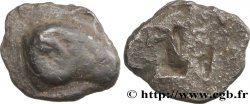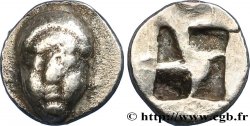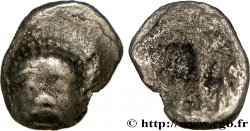Live auction - bga_693068 - MASSALIA - MARSEILLE Obole
You must signin and be an approved bidder to bid, LOGIN TO BID. Accounts are subject to approval and the approval process takes place within 48 hours. Do not wait until the day a sale closes to register. Clicking on "BID" constitutes acceptance of the terms of use of cgb.fr private live auctions.
Bids must be placed in whole Euro amounts only. The sale will start closing at the time stated on the item description; any bids received at the site after the closing time will not be executed. Transmission times may vary and bids could be rejected if you wait until the last second. For further information check the Live auction FAQ
All winning bids are subject to a 18% buyer’s fee.
All winning bids are subject to a 18% buyer’s fee.
| Estimate : | 400 € |
| Price : | 200 € |
| Maximum bid : | 200 € |
| End of the sale : | 26 October 2021 16:37:12 |
| bidders : | 1 bidder |
Type : Obole
Date: c. 470-450 AC.
Mint name / Town : Provenc
Metal : silver
Diameter : 9,5 mm
Orientation dies : 1 h.
Weight : 0,95 g.
Rarity : R1
Coments on the condition:
Monnaie bien centrée frappée sur un flan large, avec une très jolie tête au droit bien détaillée. Belle patine grise sombre
Catalogue references :
Obverse
Obverse legend : ANÉPIGRAPHE.
Obverse description : Tête d'Apollon à gauche, la coiffure en pointillés relevés sur la nuque.
Reverse
Reverse legend : ANÉPIGRAPHE.
Reverse description : Carré creux irrégulier.
Commentary
Poids lourd. Obole ou litra du type du trésor d'Auriol à la tête d’Apollon à gauche. Ce rare type appartiendrait plutôt à la Provence au sens large. L'exemplaire n° 9 de l'Annexe 2 de Furtwängler (= BN 504) pèse 0,89 gramme et ceux du trésor de la RN 1983 ont un poids moyen de 0,91 gramme. Par rapport à l’exemplaire précédent, celui-ci est relativement léger, avec 0,83 gramme. Le flan est cependant plus large et le centrage du droit permet une compréhension parfaite de la tête et de la chevelure qui repasse dans le ruban et retombe derrière.
Heavyweight. Obol or litra of the type from the Auriol treasure with the head of Apollo on the left. This rare type would rather belong to Provence in the broad sense. Copy No. 9 of Furtwängler's Appendix 2 (= BN 504) weighs 0.89 grams and those from the RN 1983 treasure have an average weight of 0.91 grams. Compared to the previous copy, this one is relatively light, with 0.83 grams. The flan is however wider and the centering of the obverse allows a perfect understanding of the head and the hair which passes back into the ribbon and falls behind
Heavyweight. Obol or litra of the type from the Auriol treasure with the head of Apollo on the left. This rare type would rather belong to Provence in the broad sense. Copy No. 9 of Furtwängler's Appendix 2 (= BN 504) weighs 0.89 grams and those from the RN 1983 treasure have an average weight of 0.91 grams. Compared to the previous copy, this one is relatively light, with 0.83 grams. The flan is however wider and the centering of the obverse allows a perfect understanding of the head and the hair which passes back into the ribbon and falls behind







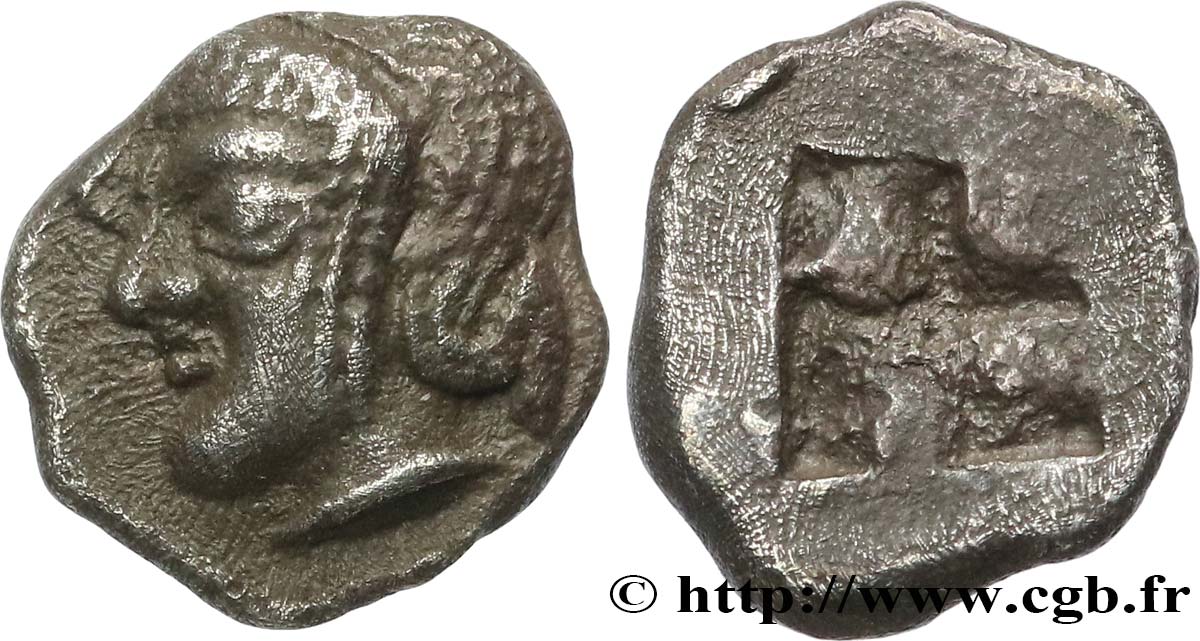
 Report a mistake
Report a mistake Print the page
Print the page Share my selection
Share my selection Ask a question
Ask a question Consign / sell
Consign / sell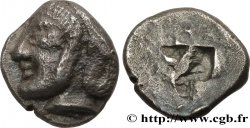
 Full data
Full data